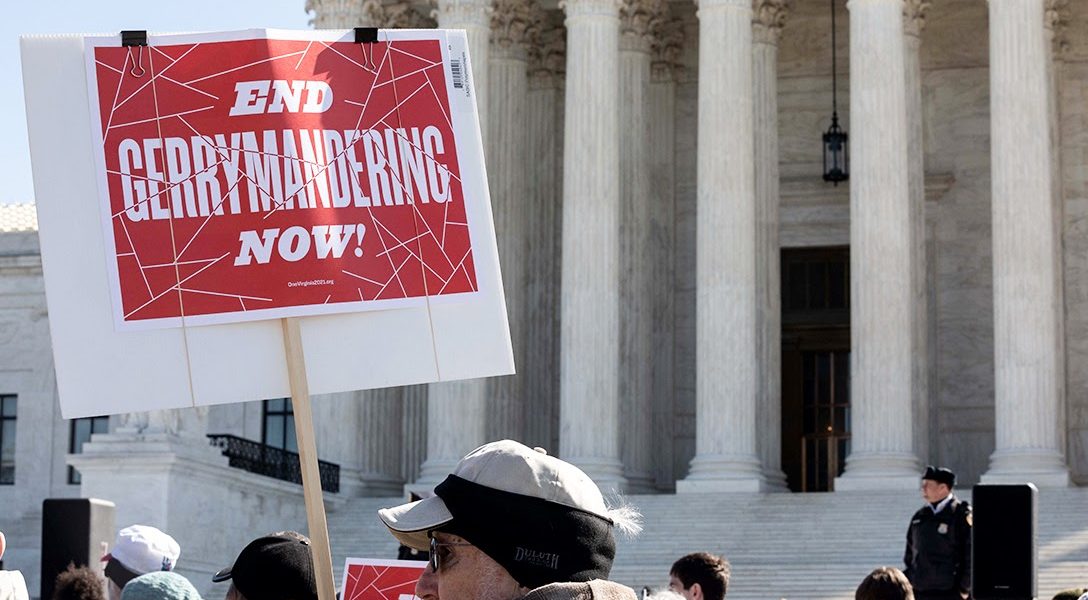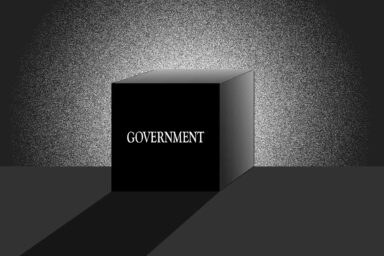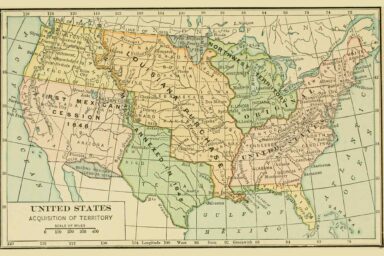GOP gerrymandering guru Thomas Hofeller died in 2018. His daughter Stephanie just released 70,000 files that detail his successful voter suppression efforts. Here is what these disclosures show and what they mean for US democracy.

Voter suppression is real and has had a measurable impact on elections this past decade. That is the inescapable conclusion anybody has to come to who has studied this issue in depth.
One such expert is David Daley, the journalist and author who has focused on covering gerrymandering. He returns in this WhoWhatWhy podcast to explain the importance of the recent public release of 70,000 files of the late Thomas Hofeller, the GOP consultant who masterminded many of the redistricting schemes since the 2010 census. Hofeller’s work enabled Republicans to win more districts in states where they have fewer voters than Democrats. In many cases, this was done by disenfranchising minorities.
In North Carolina, a federal court found that redistricting, combined with voter ID and other requirements, targeted African American voters “with almost surgical precision.” The Hofeller files, released by his estranged daughter, show the level of detailed data used to map the exact location of voters. In Greensboro, Hofeller drew a line down the middle of the campus of the nation’s largest historically black college, North Carolina A&T State University, and was able to predict how many students would be blocked from voting because their driver’s license or other ID did not list their campus address.
If you listen to this podcast and do not come away stunned and outraged, you may want to ask yourself whether you treasure democracy.
David Daley is the author of Ratfucked: Why Your Vote Doesn’t Count. His new book, Unrigged: How Americans Are Battling Back to Save Democracy, is due in March 2020.



Click HERE to Download Mp3
Full Text Transcript:
As a service to our readers, we provide transcripts with our podcasts. We try to ensure that these transcripts do not include errors. However, due to time constraints, we are not always able to proofread them as closely as we would like. Should you spot any errors, we’d be grateful if you would notify us.
| Peter B. Collins: | Welcome to another radio WhoWhatWhy podcast. In San Francisco, I’m Peter B. Collins.
Today we’re going to talk about what is properly referred to as gerrymandering but most people use a soft g,”j”errymandering. And North Carolina appears be the epicenter of manipulated voter districts. And in 2016 a federal court ruled that the map that was drawn at that time targeted African-Americans with almost surgical precision. Well now we have a great deal of data from the surgeon who manipulated those district lines and created one of the most highly “j”errymandered or “g”errymandered states in the nation. |
| Peter B. Collins: | David Daley is the journalist who’s been covering all this for years now, and we welcome him back to WhoWhatWhy. Good to have you with us, David. |
| David Daley: | Good to be here. Thanks for having me. |
| Peter B. Collins: | So you’ve published a series of stories in the New Yorker, also at The Intercept, and you wrote a book about gerrymandering. And the Hofeller files that have become public and the late designer of gerrymandered districts, Tom Hofeller, who warned all of his colleagues never to let your work get exposed. Well, he has been exposed in a major way. It’s his estranged daughter who has been instrumental in this and you’ve been following it all along. So a thumbnail for our listeners, what the significance is of the Hofeller files? |
| David Daley: | Well, I think what these files really do is they pull back the curtain on one of the men who really created our modern nation, even though we maybe don’t know his name. I mean Thomas Hofeller for the last 50 years really has been on the cutting edge of Republican electoral strategies to try to take advantage of structural loopholes inside the system. Things like redistricting, gerrymandering. And he’s been on the forefront of finding work-arounds, clever interpretations of the law, advanced use of technology, all of which has given Republicans a tremendous advantage when it comes to drawing district lines and all of these things that are so very important for determining the rules of elections. And sometimes these are hidden rules that people don’t even realize are super important. |
| David Daley: | Thomas Hofeller has always understood how important they were, worked to give his side the edge. And now in these files we see how he did it. And it was often by really exploiting race to a degree that many courts have found unconstitutional. |
| Peter B. Collins: | And in the big picture, David, it’s fair to say that this has enabled a majority control by a minority political party in many instances. |
| David Daley: | I think that’s right. There are 59 million Americans right now who live in a state where one or both of the state legislative chambers are controlled by the party that won fewer votes in 2018. 59 million of us, that’s an awful lot of Americans on, and every single one of those States, as it turns out, are States where Democrats won more votes in 2018 but Republicans hold one or both of the state legislative chambers. |
| David Daley: | And in most instances, these are States where Thomas Hofeller had a hand in drawing the legislative maps that have endured throughout this entire decade. And that has really helped usher in a period of minority rule in this country that it’s hard to see it disappearing anytime soon. |
| Peter B. Collins: | And it’s important to note that when Democrats have been in majorities, they have used the power of legislators to select their voters instead of voters picking their representatives. But in the modern era, aided by a computer’s detailed mapping information, the data on how many Republicans there are in a specific household. This has enabled the micro targeting of specific voter groups to cobble together districts that benefit, in this case, Republicans. |
| David Daley: | I think that’s exactly right. I mean, neither political party in this country has any innocence when it comes to gerrymandering and redistricting over the years. But what is different about the redistricting that happened in 2010-2011, really from any other redistricting cycle in the country’s history, is that the technology was so incredibly advanced that it allowed those who were holding control of the process to really draw lines that were essentially impenetrable and were unable to be overturned by a majority of voters at the ballot box. |
| David Daley: | In state after state, these lines that were drawn in 2011 have endured through four different electoral cycles now. They have held up in years in which Democrats win more votes in these States. If you look at a state like Wisconsin, for example. 2018 in Wisconsin, Democrats beat Scott Walker and take the governor’s race, they win the US senator’s race, they hold all of the statewide offices like attorney general and treasurer or secretary of state, and they won about 200,000 more votes statewide for Wisconsin’s assembly, the lower level of the legislature there, except Republicans hold 63 of the 99 seats. |
| David Daley: | So Democrats could get 200,000 more votes, but Republicans essentially hold a veto proof super majority at 63-36 in Wisconsin. So that is the power of these lines. And really it was a strategy. In the past, political parties have sought to use redistricting to lock in their incumbents. What Republicans recognized in this last cycle, back in 2010 and 2011, is that the demographics of the nation were changing in a way that was not particularly advantageous to the Republican party. The Republicans were becoming older, whiter, more rural, and the nation itself was becoming younger and more diverse. |
| David Daley: | And this became a strategy. It was called REDMAP. It was short for the Redistricting Majority Project and Thomas Hofeller was one of the key instigators of this. And really it was a strategy to allow Republicans to continue to hold electoral power in a changing nation even when they won fewer votes. |
| Peter B. Collins: | And David, it’s also fair to say that most of the manipulative behavior here, the drawing of these district lines appears to be legal and some of it may be in a gray area, but where it falls outside the law is where race is used as a determining factor in placing those district lines. Is that correct? |
| David Daley: | I think that’s exactly right. When it comes to partisan gerrymandering, the US Supreme court has agreed that it is distasteful, but they had been unwilling to define a standard for when partisan gerrymandering is in violation of the US Constitution. And last spring of course they said: “It’s a political issue that we can’t decide.” And they left it up to state courts and state constitutions to interpret the rules and laws in their own states on their own or up to Congress if they want to come up with a law about this. |
| Peter B. Collins: | And David, let me interject and ask why you believe that the justices in the current Roberts court are so afraid of this issue? We’ll talk in a bit about how Hofeller was central to the effort to place a citizenship question on the census coming up this year and that the court basically pushed that aside on a technicality. Say, “Well, the arguments for why we have to do this don’t quite match up.” But when it came to the proven partisan gerrymandering before the court, they ducked the issue and passed it back to an impossible source of solution. Because as long as one party has a majority, the likelihood of renewed gerrymandering based on the 2020 census is pretty high. |
| David Daley: | I find it just as frustrating and incomprehensible as you do on… This is the best that I can come up with. We’re trying to get into the head of the Chief Justice. The Chief Justice, whether you think that this is or real or not, he does not want the courts to be seen as a political branch of the government. And you can quarrel and suggest that some of his decisions on these issues are in fact nothing if not political. But on the question of partisan gerrymandering, he’s been very consistent over the years and he has believed that maps ought to be drawn by the political institutions in states that have that power, that that’s what makes them accountable to the people. |
| David Daley: | And he does not want the courts in the business of deciding when political institutions have gone too far and drawn maps that give one side too big of an advantage because then people will think that if a court overturns a map, it’s only doing so for a political purpose. And Roberts is trying to keep them out of what has been called the political thicket of regulating every single map. He thinks that the common man on the street will see the court turning over a map and will think that they’re only doing so for a political purpose. |
| David Daley: | The problem is that these maps are now so surgical and so precise that voters have very little say now in determining the make-up of the state legislatures that draw these lines. When 59 million Americans in states like Ohio and Michigan and Wisconsin and North Carolina, Pennsylvania, have legislatures in which a majority of people cannot elect a majority of seats, it essentially renders the courts the only place that they can look to for help. |
| David Daley: | So when the courts see this field at this particular time in our history, it’s especially dangerous. The Chief Justice, I think, is making an argument that might have worked 20 or 30 years ago on, but it’s not up to solving the crisis we have in our democracy right now in which we need the courts to stand up for the fairness of the right to vote and for fair maps and genuinely competitive and fair elections. And that they are not willing to be on the field at this time, fighting with us is a real problem. |
| Peter B. Collins: | And David, I don’t want to over simplify this, but I believe that you and I with a few adult beverages, could sit down and lay out guidelines and rules that would be fair to all parties and that would be transparent regulations that would guide, or I guess prepare, guard rails that would prevent people from straying too far into the partisan zone. |
| Peter B. Collins: | And I say that based on my own participation in California’s Citizens Redistricting Commission. And after the 2010 census, they conducted meetings up and down the state. We were permitted to watch, they put up maps as we were describing our preferences and show well, if you do that, it causes this ripple effect over here. And so it’s not as complex as the court and the Chief Justice, I think, make it out to be. And it’s really shameful that this extreme gaming of our electoral process is going to continue. |
| David Daley: | I think you’re right. And I think that the politicians and perhaps some judges want people to think that this is more complicated than it actually is. But you’re absolutely right. There are simple rules that can be instated to make this process fair for everybody. And it starts with public hearings, it starts with genuine transparency, it starts with rules saying that you can’t draw maps with explicit partisan purpose. |
| David Daley: | There are really simple guide rules that can be laid out. And now the technology is also so good that there are ways to check for political bias in the maps. And what was so sad about the Supreme Court’s decision last spring was that you had a growing chorus of federal courts stepping forward and saying that they had the tools they needed to clearly make decisions about these maps. |
| David Daley: | You had had maps overturned by federal courts, maps in Ohio, in Michigan, and North Carolina, in Maryland, in Wisconsin. And in all of these cases, the courts were able to use these… You would have a political scientist or a computer scientist who would come up with 25,000 neutral maps. They would create a set of neutral maps randomly on a computer. And you would then be able to compare the results from the 25,000 neutral maps against the one that politicians drew. |
| David Daley: | And in all of these cases, the one that the politicians drew, was like 99.9% more biased than all of the other maps. So it was clear what happened. And a court could weigh the evidence and look at it and say this goes too far. It doesn’t have to be right in the middle, but it can’t be all the way on the edge, one of these crazy radical outliers. |
| David Daley: | So there are ways to do this. And these federal judges were trying to tell the Roberts Court this, and these were judges that were appointed by Republican presidents and Democratic presidents, going back years. They were saying, this is not that difficult. We have the tools to do it and it’s important that we get involved. And yet the Chief Justice closed the door. |
| Peter B. Collins: | We owe a debt of gratitude to Stephanie Hofeller, the woman who describes herself as estranged from her father at the time of his death, a year and a half ago. And as she was cleaning out his house, she discovered the computer and the files and the hard drives. And I wonder if you could pick up there and tell us a little bit about her. She’s described as an anarchist and she… I guess the best way I could put it is she doesn’t dance on her father’s grave, she tweets on it. And I’m just wondering if you’ve met her and how you could describe her for our listeners. |
| David Daley: | I have not met Stephanie, but I would say that Stephanie is a great American hero and that she has stood up and done an amazing thing for democracy and fairness. And that her bringing forth these files is going to prove to be a historic turning point on the census, on fair maps in North Carolina. There’s really no end to what her uncovering all of these documents will mean for past and future litigation. |
| David Daley: | She’s a whistle blower of real magnitude. I put this up there with Daniel Ellsberg and the Pentagon Papers, Edward Snowden, in the Pantheon of sort of great American whistle blowers of the last 50 years. What she has done here has really stripped bare and shown the entire nation how Republicans went about intentionally subverting American democracy using race information systematically over the course of decades. |
| Peter B. Collins: | Well, and let me just enhance your comparison a little bit. I credited Snowden with being a courageous whistleblower, but I’m confounded that years later, we still haven’t seen all of the files. We don’t know how many there were and they haven’t even released, for example, all of the files from a single PowerPoint presentation about the PRISM program. And in this case, Stephanie Hofeller has just put it all online, unmediated and you can find them at the URL, thehofellerfiles.com, H-O-F-E-L-L-E-R. |
| Peter B. Collins: | So this is a remarkable move on her part. Can you tell us about, just briefly, the court issues, the judicial issues that were raised and what was cleared up to permit her to publish all these files without liability? |
| David Daley: | Well, it’s a good question and she could still could face some liability. I imagine that we haven’t heard the end of that. There’s still some questions I think that could be raised about ownership of some of these documents. And that she’s willing to go forward with them right now, I think speaks to her courage. But the short answer is that there was never anything stopping Stephanie herself from publishing these documents. |
| David Daley: | She discovers these files in her father’s condominium after his death. And what she does is eventually takes them to Common Cause which had been fighting a lawsuit in North Carolina attempting to overturn the maps that her father drew there that had been so effective for the Republican party. When Common Cause went through these documents, they were essentially able to use them both in their redistricting suits, but they were also able to, through various subpoenas, those documents came into the purview of the folks who were working on the census citizenship question case before the US Supreme Court. |
| David Daley: | And once it became clear that there were all of these files, the Republican party, various Republican entities around the country, Hofeller’s former firm and some of his former business partners, claimed ownership of these documents. And finally a court in North Carolina said that just about 85% or 90% of them belonged in the public domain. And Common Cause, I believe, was in the process of trying to make as many of these public as possible. |
| David Daley: | It’s a complicated process. There’s thousands and thousands of documents, but Stephanie was never liable or governed by any of the privacy restrictions that had been worked out and ordered by the court in the Common Cause case. So there was nothing stopping her legally from going ahead and doing what she has done and making the entire set available. |
| Peter B. Collins: | So David, what is your overview of the documents? I don’t imagine that you’ve managed to read all 70,000. But does it mostly focus on the States where he was hired as a consultant by either Republican state parties or the Republican National Committee? What’s the scope in your view? |
| David Daley: | The scope is massive. And I have been through just about everything in there. |
| Peter B. Collins: | You have? |
| David Daley: | Thousands of emails, thousands of draft maps, and a lot of it is repetitive. A lot of these documents are across multiple hard drives. But I think what you really see, the real takeaway here is just how precise and surgical and intentional these maps were. When you look through his files, what you see are these incredibly granular databases of information about individual voters broken down across 50 or 60 sometimes different areas so that when the map maker was drawing that line, and deciding who should be in which district, they knew just about everything you would need to know about all of the voters in all of those houses, so that they were able to go down those streets surgically and precisely and create exactly the kind of districts that they wanted to. This was intentional. This was precise and it was very, very technologically sophisticated and effective. |
| Peter B. Collins: | And to illustrate that, let me ask you to offer details to our listeners here about the remarkable line that was drawn in the middle of the campus of North Carolina, A&T State University, that’s near Greensboro. And you described how Hofeller compiled data, it’s as if he walked down the hallway of every dorm and had profiles of all of these individuals and how they might vote. And it shows right down to 50 different fields of precise information. This is quite remarkable, but what was the impact in drawing the line between the States’ sixth and 13th congressional districts? |
| David Daley: | Well, Greensboro North Carolina is a majority black city, but it is represented in Congress by two of the most conservative members of the US house. And one of the reasons for that is that Republicans there diluted the votes of the citizens of Greensboro by cracking it in half and splitting those votes across two different congressional districts so that there wouldn’t quite be enough black voters in either one to elect a Democrat. |
| David Daley: | So what Hofeller did, one of his lines, I’d live it at Laurel street, and I’ve gone down there and I’ve actually walked this campus and seen this. And what they did was they put seven of the dorms at North Carolina A&T, the oldest historically black university in the nation, in one district and six in the other. And that just perfectly scattered those voters in such a way that you would end up with two Republican members. |
| David Daley: | And in North Carolina, the politicians there have said, “Oh, we didn’t know what we were doing there. That was just an accident. It’s a coincidence. Oh, it just happens to be a precinct boundary.” Except what you find in Hofeller’s files are these giant databases that show not only the racial make-up and the voting patterns and the specific addresses of tens of thousands of college students in North Carolina, but you see whether or not they had a driver’s license that matched their college address. Because North Carolina had gone and passed this really intense voter ID bill that was designed specifically to disenfranchise black voters in the state by mandating the kind of identification that they knew most black voters in the state did not have. |
| David Daley: | And Hofeller has these databases of addresses and then whether or not the address matches the driver’s license database. So they knew which members of this university would actually be allowed to vote. And the spreadsheets just have dozens and dozens of fields on the ratio, on the geographic and the gender breakdown of all of these college kids. They know which dorm they live in. So the spreadsheets that would actually show whether these students lived in Aggie Village on one side or on Mauro in the other side. |
| David Daley: | So essentially as they were trying to create these two districts that would reliably vote Republican, even though they contained a majority black city, they had incredibly precise, sophisticated data on the voting tendencies of the black voters in this area. |
| Peter B. Collins: | So David, we know that the use of race information to draw these boundaries is explicitly illegal. Do you have any information to suggest that the collection of any of the data in this detailed big data database that Hofeller managed was obtained illegally? For example, did he have legal access to driver’s license information in North Carolina? |
| David Daley: | I think that’s a great question. And it’s one I’ve been doing some reporting on. I think a lot of this information is public information, but it seems to me that a lot of it might not be. And I think that there could be terrifically fruitful avenues of investigation to find out how he got all of this information, who gave it to him and whether that was within their legal rights. |
| Peter B. Collins: | I won’t attempt to be your editor, but I will encourage you to look at whether they used information from Google or Facebook to populate their datasets. |
| David Daley: | I am unaware of specific information that they got from Google or Facebook, but I would say that social media likes and information that can be gleaned from the internet, from our shopping histories, from our online purchases, that all of that produces a really rich and powerful data set of information on us that map makers certainly have access to when they are drawing these district lines. And what we purchased says a lot about what our politics are. So it can be incredibly useful. |
| David Daley: | One of the first things that the FCC did in the Trump administration was they made it possible for the ISPs, the big internet service providers that essentially own all of these powerful sets of our web searches to sell that information. So the map makers that are drawing lines in 2021 could conceivably have access to all of that. I actually emailed Hofeller back in 2016 when that decision came down. And it’s the only time we actually corresponded in any meaningful way. |
| David Daley: | And he told me that he didn’t think that would have much of an impact. That most of the information that could be gleaned through web searches was already available to map makers in other ways that they didn’t need that, it would be redundant. But I still think it’s a very powerful set of information. |
| Peter B. Collins: | David, what you described there in Greensboro is an incredible case of sophisticated, intentional efforts to draw maps to suppress the vote of targeted populations. And I have long argued that voter suppression schemes run by the Republicans were highly successful in 2016. And when I hear people say that Russia meddled in our election and turned the tide for Trump, I don’t believe that. I really believe that Americans in the United States, including these Republicans who were paid to game the system to the max, had a definitive impact. And when I hear people talk about low turnout by African-American voters in 2016, I think that that often is either mistaken with, or conflated with, the successful voter suppression tactics that were employed. |
| David Daley: | I think you’re right. I think all of it is of a piece and all of it fits together and it’s hard to say where one ends and one begins. I’d also say that Hillary Clinton wins the popular vote in 2016 by 2.8 million. Donald Trump wins the electoral college by 80,000 votes in three States. We’re talking about Wisconsin, Pennsylvania, and Michigan. |
| David Daley: | So 80,000 votes in three States is not a lot. And there’s a lot of theories about why that happened and it’s hard to discount any of them when you’re talking about just 80,000 votes. But I think that what you’ve said is spot on. Pennsylvania, Wisconsin and Michigan are three States that Republicans took over in 2010 in part, thanks to the project REDMAP and the maps of Thomas Hofeller in 2011. Those maps allowed Republicans to keep control of all of those States in the state legislature this entire decade. |
| David Daley: | And what you saw those States do, particularly in Wisconsin, but to a lesser extent in Michigan and Pennsylvania, was to enact voter restrictions that made it harder for low income and Americans of color to vote as easily as they had been able to in the past. |
| David Daley: | So in Wisconsin you had a particularly a draconian voter ID bill and you saw voter turnout collapse in Milwaukee in 2016 for the Democratic party. Tens if not hundreds of thousands of black voters did not go to the polls. How much of that is due to the voter ID bill? How much of it is due to Barack Obama not being on the ballot? How much of it is due to a Russian-instigated Facebook campaign to try to talk up a super predators and toned down African-American turnout in these States? I think all of it happened and all of it worked and it’s not going to stop. |
| Peter B. Collins: | So finally, David, I wanted to ask a former Attorney General, Eric Holder, from his corner office at Covington and Burling, has been running an effort to try to reverse the tide. And I know they’ve raised some money, I know they’ve issued some press releases, but have you seen any measurable action by this organization that could shift the outcome of the redistricting following this year’s census? |
| David Daley: | What I think Holder’s group has done really, really effectively is raised public awareness of the importance of this issue. I don’t think that they’re the only ones who have done this, but I think that redistricting has become a sexy and exciting topic. Gerrymandering is being talked about all over the place now in a way that it was not just a few years ago. |
| David Daley: | And for Democrats to unravel what happened to them in 2010, they’re going to have to win back state legislatures. They’re going to have to win back these down ballot races that have the power to draw new maps. And Holder and his group I think have done, as well as Jessica Post and the Democratic Legislative Campaign Committee, what folks like Amanda Litman, Run for Something and the groups like Swing Left and Flippable have done, I think is call attention to the importance of these down ballot races and to remind Americans that sure there’s a race for the White House going on in 2020 but that these small local offices that maybe people don’t spend much time thinking about, they’re going to have the power to draw our legislative lines for the next 10 years. And if we don’t vote in all of those races and run candidates for all of those offices, that it is really easy for one side to game the system. |
| Peter B. Collins: | David Daley is a journalist and the author of Ratf**ked, Why Your Vote Doesn’t Count. David, thanks for being with us again today. |
| David Daley: | Oh, it’s a pleasure. |
| Peter B. Collins: | Thanks for listening to this radio WhoWhatWhy podcast with David Daley. Send your comments to Peter at peterbcollins.com. And do what you can to support the investigative journalism work here at
WhoWhatWhy. |
Related front page panorama photo credit: Adapted by WhoWhatWhy from Kenny Cole / Flickr (CC BY 2.0).



